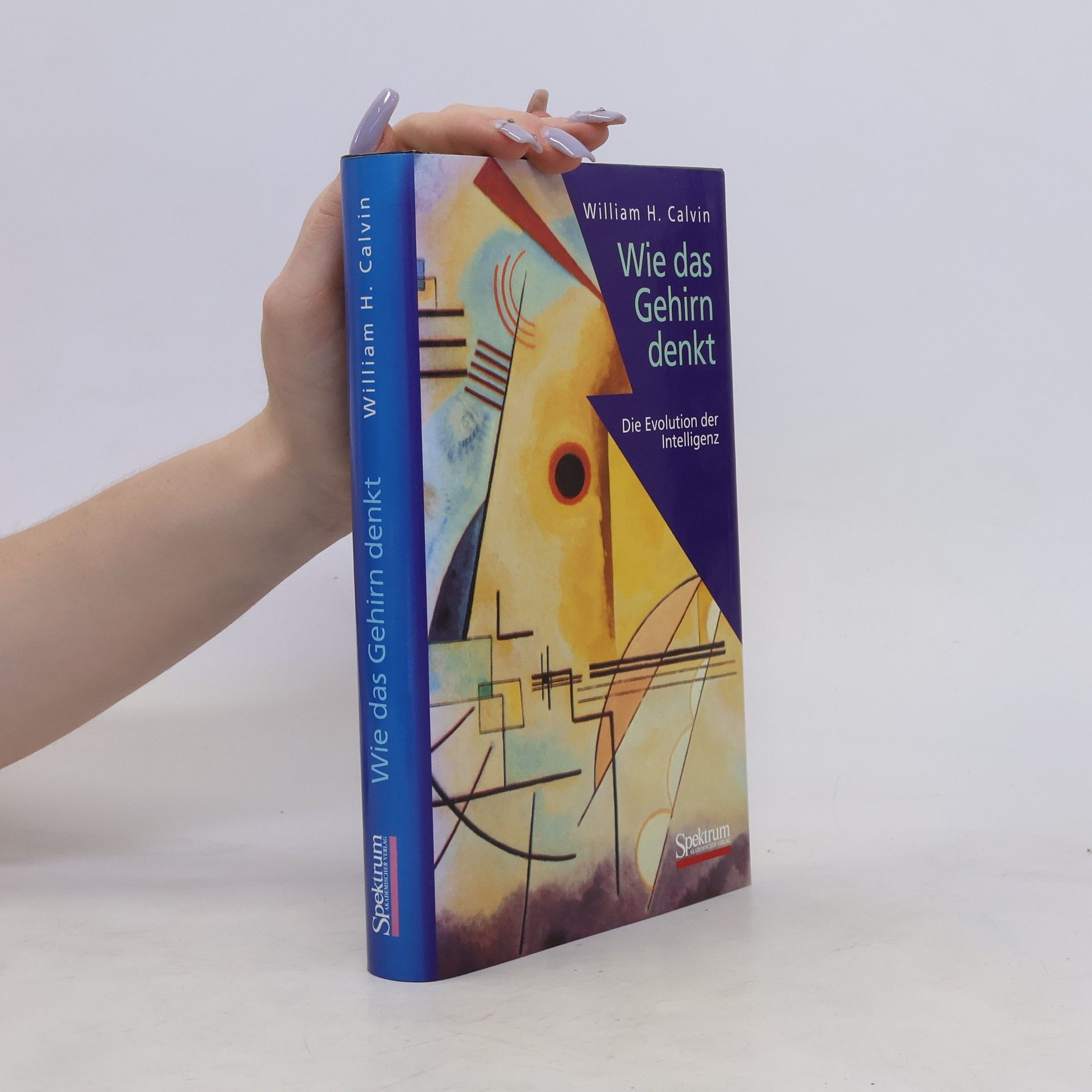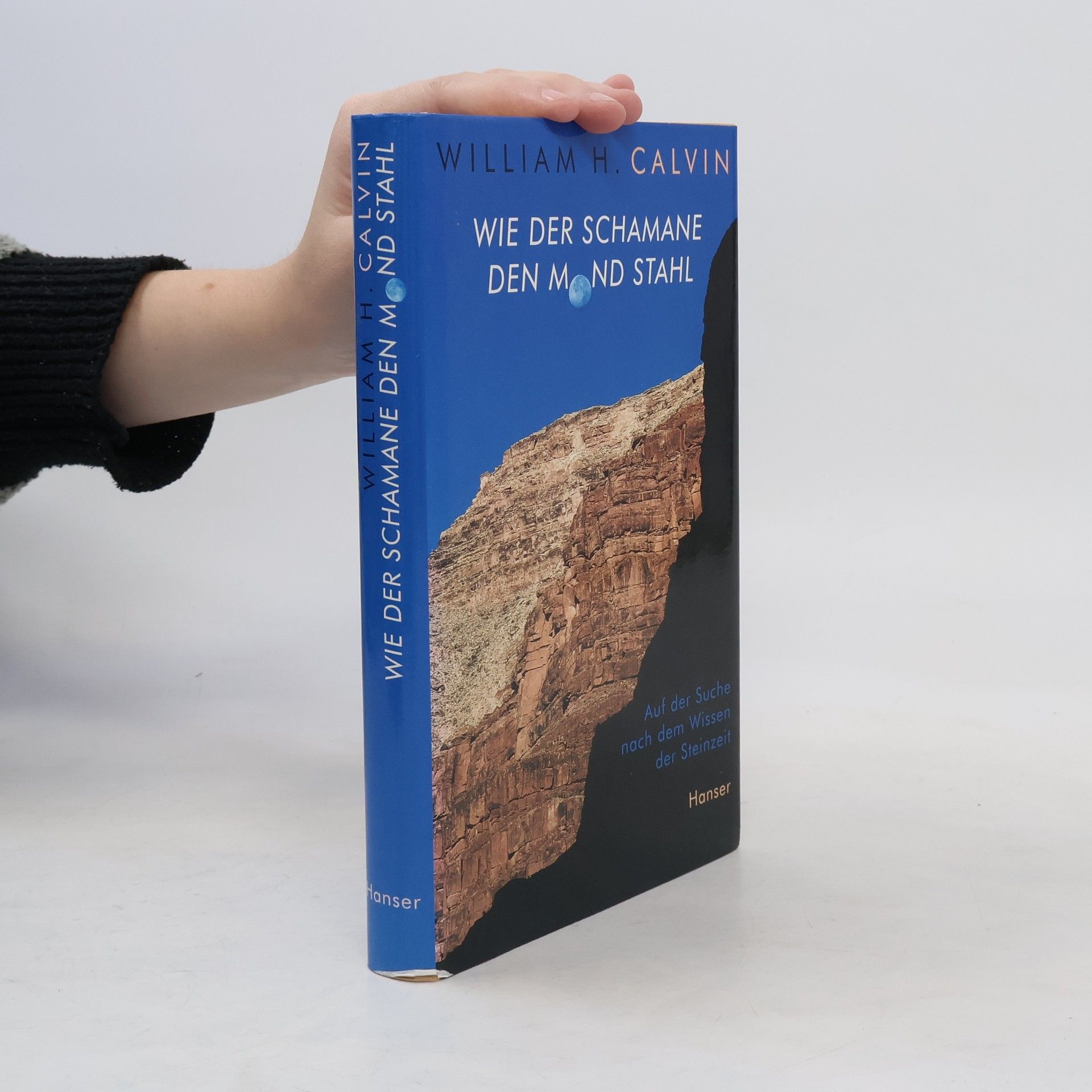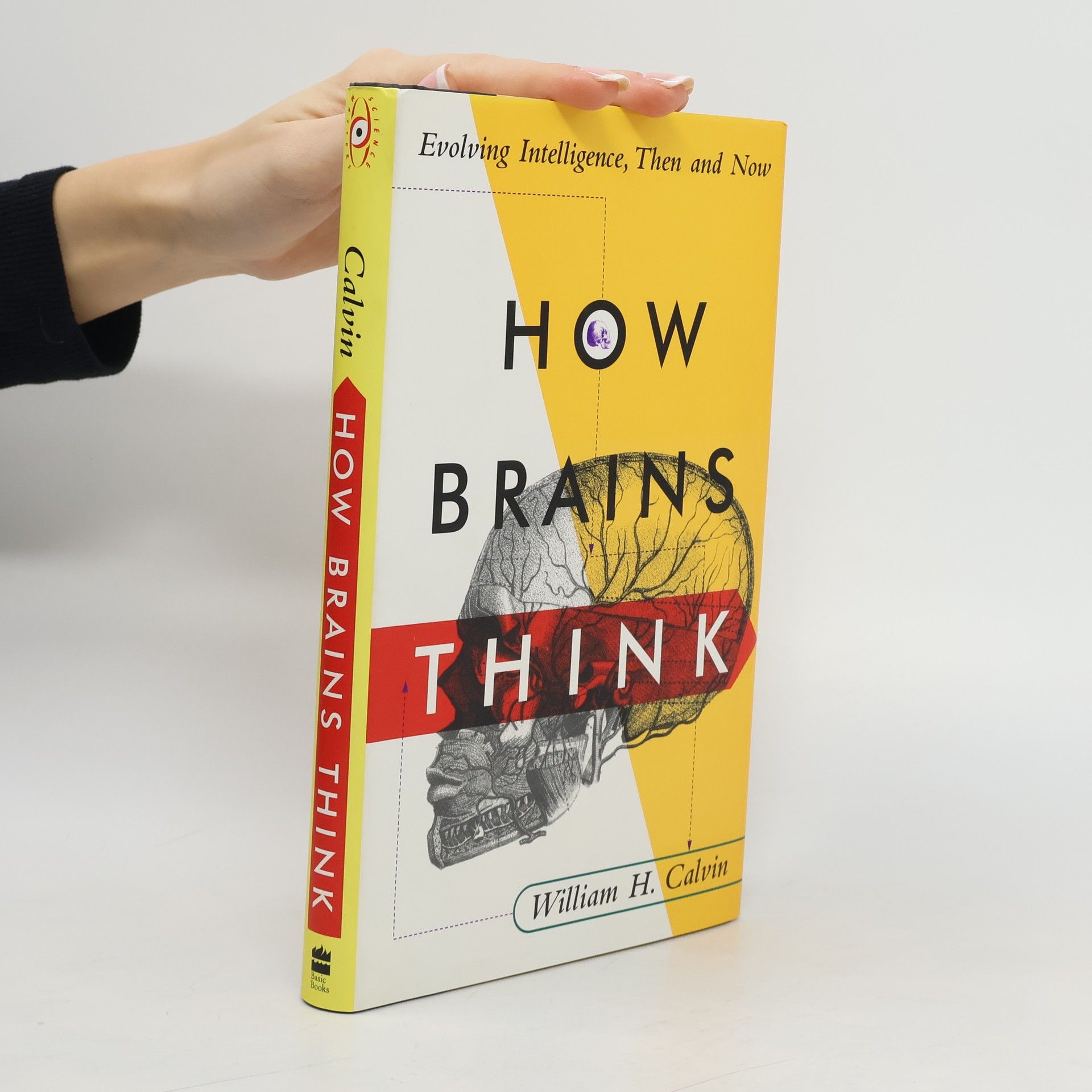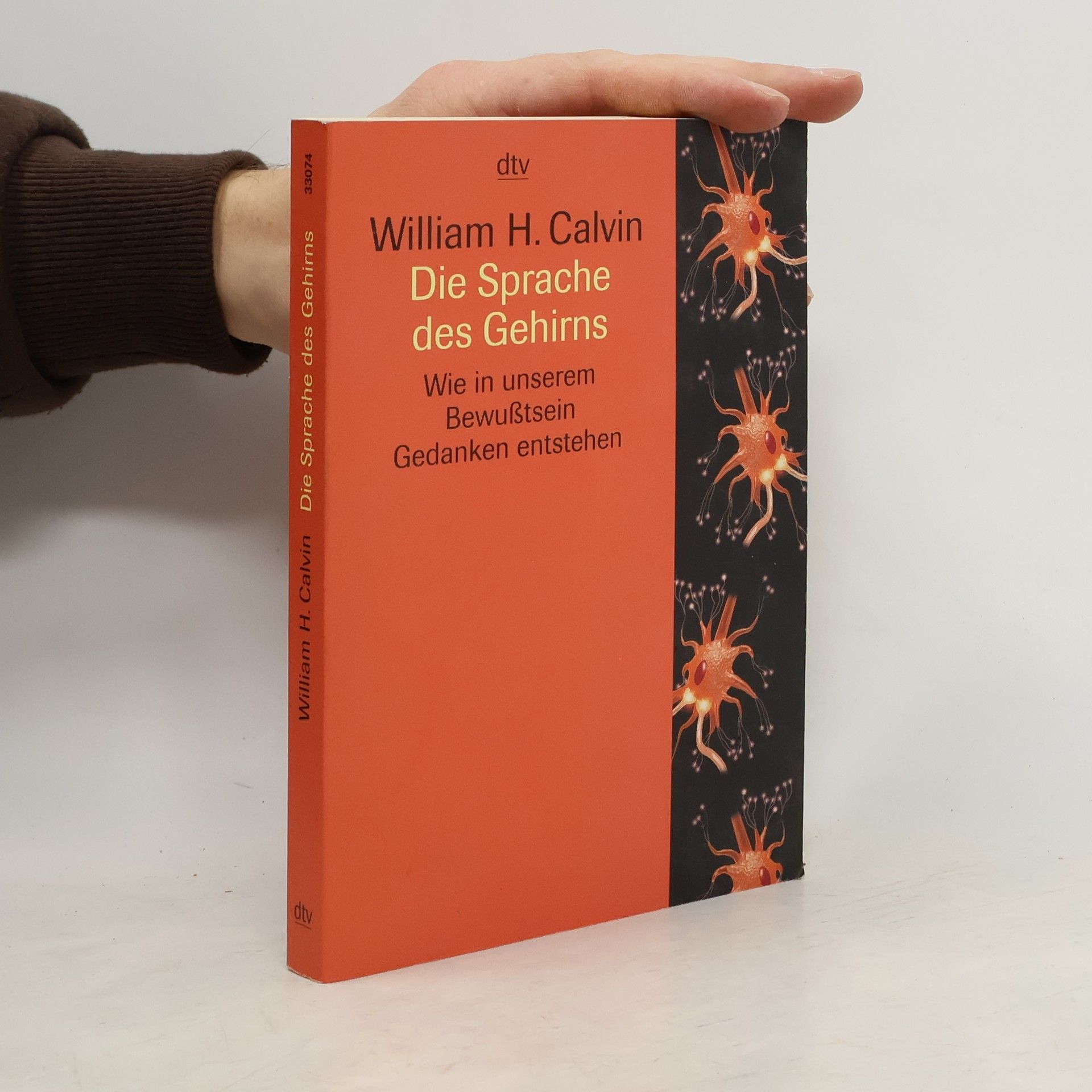William Calvin and Derek Bickerton suggest that other evolutionary developments, not directly related to language, allowed language to evolve in a way that eventually promoted a Chomskian syntax.
William H. Calvin Boeken
William H. Calvin is een theoretisch neurobioloog wiens werk de complexiteit van hersenen en evolutie onderzoekt. Hij heeft een dozijn boeken geschreven, voornamelijk gericht op algemene lezers, waardoor complexe wetenschappelijke concepten toegankelijk worden. Zijn schrijven overbrugt de kloof tussen gespecialiseerde kennis en boeiende verhalen, en biedt inzichten in de menselijke geest en de ontwikkeling ervan.






This book tries to fathom how our inner life evolves from one topic to another, as we create and reject alternatives. Drawing on anthropology, evolutionary biology, linguistics, and the neurosciences, Calvin also considers how a more intelligent brain developed using slow biological improvements over the last few million years.
Mit seiner Gabe, komplexe Zusammenhänge einleuchtend und spannend zu erläutern, bringt William Calvin die Steine zum Sprechen: Er beschreibt, wie geologische Formationen im Grand Canyon, Anasazi Valley und Rio Grande – lange vor Beginn jeglicher Zeitrechnung – Forschern erste Erkenntnisse über Himmelsphänomene lieferten, mit denen sie eine ungeheure Macht begründen konnten: die Macht über Mythen.
Der Strom, der bergauf fließt. Eine Reise durch die Evolution.
- 707bladzijden
- 25 uur lezen
Eine Bootsfahrt durch den Grand Canyon wird zur spannenden Reise durch die Geschichte des Lebens. William H. Calvin bricht mit einer Gruppe von Wissenschaftlern zu einer Fahrt auf dem Colorado auf und hält die faszinierenden Eindrücke der Stromschnellen, bizarren Felsformationen und extremen Fauna und Flora in einem Tagebuch fest. Jeder Tag auf diesem Strom, der stellenweise tatsächlich bergauf fließt, bringt Calvin und seine Gefährten dem eigentlichen Reiseziel näher: die Ehrfurcht vor der Schöpfung wieder zu wecken.
Die Darstellung der komplexen Inhalte des neuronalen Darwinismus wird von Calvin lyrisch und einnehmend vermittelt, was das Interesse des Lesers weckt. Er bietet eine wertvolle Einführung in die Bewusstseinsdebatte und präsentiert seine Ideen ohne Vorkenntnisse zu verlangen. Calvins Modell beschreibt das Gehirn als ein „neurales Sängertreffen“, in dem Nervenzellen in Chören konkurrieren, um ihre Melodien – unsere Gedanken – durchzusetzen. Diese Metapher verdeutlicht, wie aus einfachen Ursprüngen komplexe Ordnungsmuster entstehen können. Calvin argumentiert, dass der Weg zum Verständnis des Bewusstseins nicht direkt von der Quantenmechanik zu höheren geistigen Leistungen führt. Vielmehr müssen chemische Bindungen, Biochemie, Membranen, Synapsen und Nervenzellen in die Erklärung einbezogen werden. Seine unterhaltsame Erkundung der modernen Hirnforschung endet mit einem Ausblick auf die Zukunft der Intelligenz, die nicht nur biologisch, sondern auch künstlich wird. Die Entwicklung intelligenter Maschinen ist für ihn nur eine Frage der Zeit, was die Frage aufwirft, ob wir in eine neue Phase des Wettlaufs zwischen menschlicher und maschineller Intelligenz eintreten.
Mit Hilfe bestimmter Meßmethoden ist es inzwischen möglich, Einblick in das lebende denkende Hirn zu nehmen. Der amerikanische Neurobiologe William Calvin erklärt in seinem verständlich geschriebenen Buch, wie aus den simplen Aktivitäten unserer Gehirnzellen etwas so Komplexes wie das Denken entsteht.
Die Sprache des Gehirns
- 286bladzijden
- 11 uur lezen
Wie ordnen sich in unserem Gehirn Begriffe, Vorstellungen und Erinnerungen zu zusammenhängenden Gedanken? William Calvin erklärt, wie diese Elementarsprache unseres Denkens funktioniert. Ihre Bausteine lassen sich nicht beliebig sortieren. Sie werden so lange arrangiert und sortiert, bis ein brauchbarer Gedanke oder Satz zustande kommt. Calvin zeigt, wie dieser Prozeß der Selektion und Kombination aus dem Hintergrund von einer »Darwinmaschine« gesteuert wird.
Der Schritt aus der Kälte
- 320bladzijden
- 12 uur lezen
Klima-Umwälzungen wie Eiszeiten und globale Erwärmungsperioden führten stets zu ökologischen Katastrophen und evolutionären Veränderungen. Wer in dieser Zeit seine Nahrungsorganisation klug gestaltete und flexibel neue Siedlungsräume erschloss, erlangte evolutionäre Vorteile. William H. Calvin untersucht in diesem Werk die Verbindung zwischen den großen Klimawechseln nach der Eiszeit und der Vergrößerung des menschlichen Gehirns. Als herausragender Wissenschaftler und begnadeter Erzähler fesselt er sein Publikum und kommt zu dem Schluss, dass unser Gehirn eine Folge globaler Klimawandel ist. Die zentrale Frage bleibt, ob es ausreicht, die nächste Klimakatastrophe zu verhindern. Calvin bietet einen naturwissenschaftlichen Blick auf diese Thematik und präsentiert den Erkenntnisgestus der Naturwissenschaftler in einer klaren und sympathischen Weise. William H. Calvin, geboren 1939 in Kansas City, ist theoretischer Neurophysiologe und Professor für Psychiatrie und Verhaltensforschung an der Universität von Washington. Er hat zahlreiche wissenschaftliche Arbeiten veröffentlicht und war Gastprofessor für Neurobiologie. Zu seinen deutschen Veröffentlichungen zählen unter anderem Werke wie „Die Symphonie des Denkens“ und „Der Strom, der bergauf fließt“.
Einsicht ins Gehirn
- 392bladzijden
- 14 uur lezen
Wie funktionieren Sprache, Erinnerung, Gedächtnis? Zwei der kompetentesten Hirnforscher Amerikas stellen in unterhaltsamer Form die neuesten Erkenntnisse ihres Forschungsgebiets dar und geben Einsichten in die Prozesse, die sich in unserem Kopf abspielen. Ihre spannende Reise durch das Gehirn führt den Leser in eine Welt, die immer noch voller Geheimnisse und erstaunlicher Phänomene steckt. »Der naturwissenschaftliche Blick, der Erkenntnisgestus der Naturwissenschaften in reinster und sympathischster Form.« DIE ZEIT



